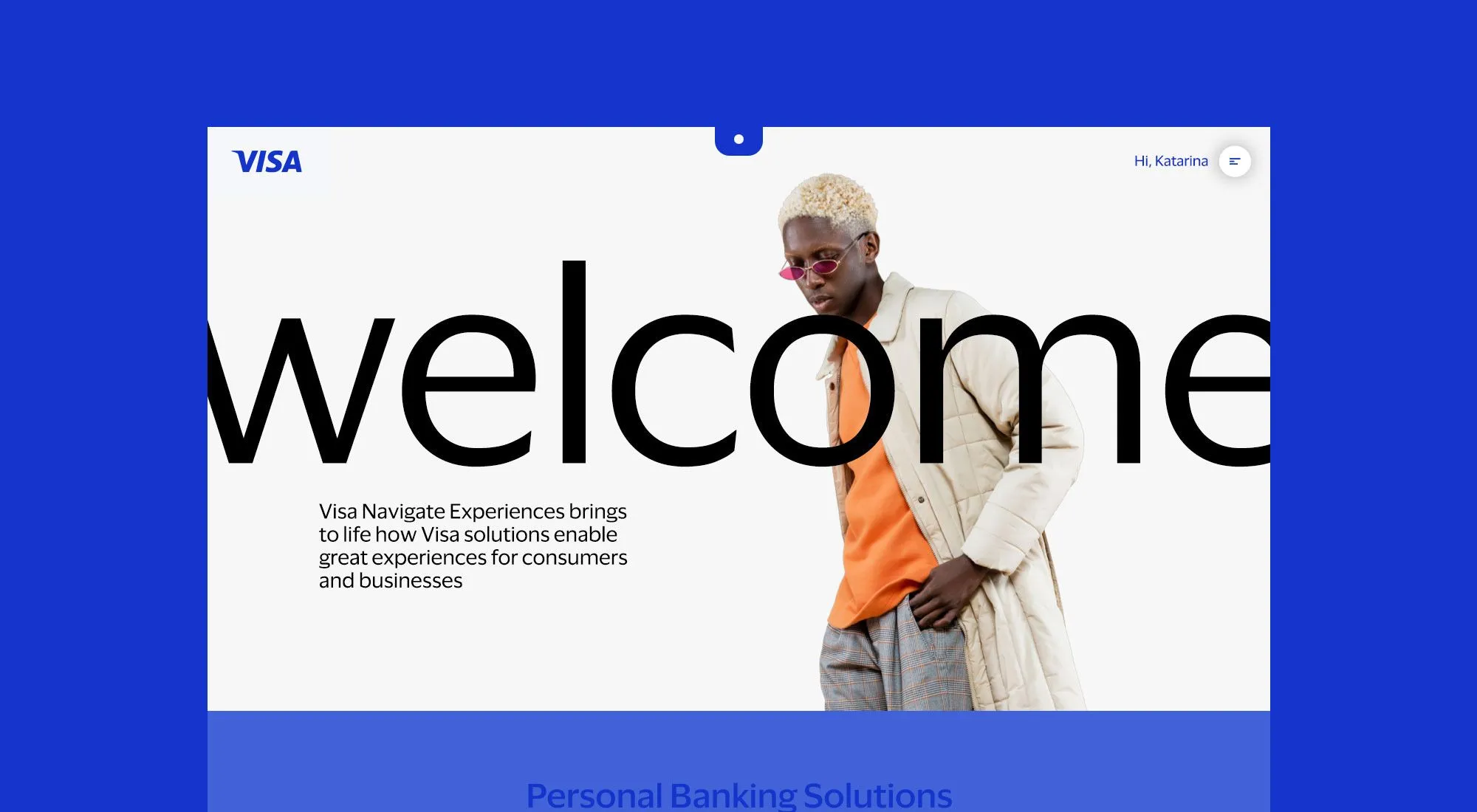ELEVATING B2B STORYTELLING

Visa needed a secure, scalable platform to provide key B2B clients with seamless access to product and solution information. The challenge? Cutting through complex financial messaging to create an engaging, story-driven experience that informed, inspired, and converted.
We developed the Visa Navigate Experiences Platform—an immersive digital destination that transformed traditional B2B engagement. By delivering tailored, high-value content, this initiative positioned Visa as an essential strategic partner for businesses across Europe.
Turning complex financial insights into compelling, actionable narratives.
TURNING INSIGHT INTO NARRATIVES
Services provided:
A seamless experience built for B2B decision-makers
To move beyond static presentations and traditional sales collateral, we built an interactive platform that allowed Visa’s key clients to explore tailored content journeys. Featuring detailed product insights, solution deep dives, and real-world use cases, Visa Navigate delivered essential intelligence in an accessible, engaging way.
Content built to resonate, engage, and convert
Visa’s expertise in financial solutions is vast—but conveying its full value required a story-driven approach. We restructured complex information into a narrative-first experience, integrating dynamic visuals, multimedia content, and intuitive navigation. This ensured Visa’s partners could access the insights they needed—quickly, efficiently, and impactfully.

THE RESULTS
SIGNIFICANT ENGAGEMENT UPLIFT SCROSS VISA'S B2B AUDIENCE
STRONGER BRAND ALIGNMENT WITH KEY BUSINESS PARTNERS
TRANSFORMED VISA'S B2B ENGAGEMENT MODEL, MAKING INFORMATION MORE ACCESSIBLE AND ACTIONABLE

Setting a new standard for B2B storytelling
By leveraging Smart Craft insights, we turned Visa Navigate into a cornerstone of Visa’s B2B strategy—an evolving, data-driven platform that continues to drive engagement, strengthen partnerships, and position Visa at the forefront of financial innovation.
Could you be our next client?
If you’ve seen something in our case studies that got you excited, made you want to learn more, or you’d just like to meet the team behind the work – let’s talk.

